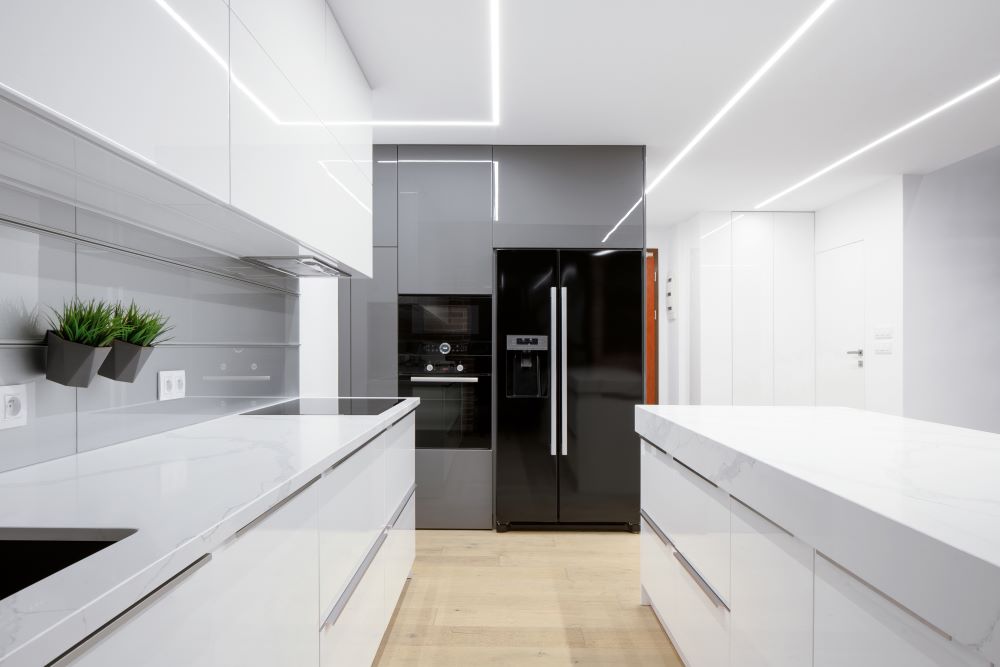Understanding the language used to describe colors, especially when it comes to white, can be perplexing for those who are not familiar with the specialized terminology. Everyday words and phrases are used in ways that differ from their common usage, creating confusion. For instance, when people discuss “temperature” in conversation, we naturally associate it with warmth or coolness. However, when it comes to describing color, particularly white, the concept of “temperature” takes on a different meaning. It may be challenging for someone without prior knowledge to grasp the idea of different “shades” of white, as white is commonly perceived as the absence of color. Fortunately, this confusion can be easily cleared up by gaining a basic understanding of white color terminology. By doing so, individuals can make more informed decisions regarding the ideal lighting options for various environments.
Lighting is a crucial aspect of our living spaces, both functionally and aesthetically. While we all understand the importance of good lighting, the terminology surrounding white light can be confusing, especially when it comes to LEDs. Here’s a comprehensive guide to unravel the complexities of white color terminology in lighting.
Understanding Color Temperature
One of the most critical aspects of white light is its color temperature, measured in Kelvins (K). Color temperature does not refer to the heat of the light source, but rather the color of the light emitted. The Kelvin scale typically starts from 1000K (very warm/yellow light) and can go up to 10,000K (very cool/blue light).
- Warm White (2700K – 3000K): Warm white lighting is calm, cozy, and inviting, with a yellow-orange hue. It’s ideal for living rooms, dining rooms, bedrooms, and other areas where a relaxed, comfortable environment is desired.
- Neutral White (3500K – 4100K): Neutral or cool white is brighter and more balanced, with less yellow and a more neutral, slightly bluish hue. This type of lighting works well in kitchens, bathrooms, offices, and retail spaces.
- Daylight (5000K – 6500K): Daylight LED lights mimic natural sunlight, providing a bright, invigorating light with a cool blue hue. This lighting is perfect for display areas, security lighting, garages, and task-oriented areas.
Color Rendering Index (CRI)
The Color Rendering Index (CRI) is another essential factor to consider. CRI is a measure of how accurately a light source reveals the true colors of objects, people, and surroundings. It is rated on a scale from 0 to 100, with 100 representing the quality of light provided by a natural light source (like the sun).
Lights with a high CRI (above 80) are desirable in spaces where color accuracy is important, such as art studios, retail stores, or bathrooms.
Understanding White LED Types
With LED technology, there are different ways to achieve white light. Here are the primary types:
- Phosphor-Converted (PC) LEDs: In PC LEDs, a blue or ultraviolet (UV) LED is coated with a yellow phosphor, which absorbs some of the blue light and emits a yellow light. The combination of yellow light and the remaining blue light appears white to the human eye.
- RGB LEDs: These LEDs combine the light from red, green, and blue LEDs to create white light.
- White Tunable LEDs: These advanced LEDs allow users to adjust the color temperature of the light, offering the ability to control both the intensity and hue of their lighting.
Understanding white color terminology in lighting can help you make better choices for your lighting needs, ensuring that your spaces are not just well-lit, but also pleasant, functional, and energy-efficient. After all, the right lighting can transform a space, create mood and atmosphere, and even improve your productivity and well-being.
White Color Terminology in Lighting
White color light is a combination of red, blue, and green light. The relative proportions of red, blue, and green light that emanate from a lighting source will affect the perceived white color of that light. When lighting specialists refer to “color temperature” (they frequently use the acronym “CCT” for this reference), they are discussing this relative combination. Color temperature is somewhat inversely related to the actual physical temperature of the light source. For example, consider an incandescent light bulb with a tungsten filament. When that bulb is dimmed to a low setting, the filament will have a cooler physical temperature, but the light that it emits will be perceived to be “warmer”. That light has a greater proportion of red than green and blue coloring.
As more power is provided to the filament, it glows brighter, with a greater proportion of blue coloring over red. The filament itself is physically hotter, but the light that it emits is perceived to be “cooler”. This terminology might strike a layperson as contradictory, but lower color temperatures create a warmer perception, and higher color temperatures create a cooler perception. Thus, if you are designing lighting for a specific area and want to create a warm atmosphere, you would select light sources that have cooler temperature ratings.
Lighting Temperature & Index
Lighting temperatures are measured along a scale named after the British physicist, William Kelvin. A Kelvin scale with measurements in degrees is also used for physical temperatures. The Kelvin lighting scale also uses measurements in degrees. You may recall from high school physics classes that the freezing and boiling points of water are 273 and 373 degrees Kelvin, respectively. Again, lighting temperature magnitudes are separate and distinct from physical temperatures. The flame of a wooden match, for example, might have a physical temperature of approximately 550 degrees Kelvin, but the light that emits from that match will have a color temperature of 1,700 degrees Kelvin.
A white light source’s “color rendering index”, or CRI, is a related measure that denotes a light source’s ability to recreate an object’s natural coloring. Light sources that have higher CRI ratings, including LED lights, are more effective at doing this. This is easiest to understand when considering the yellowish tinge that low temperature lighting sources cast on objects, which obscures their natural colors. CRI ratings are on a scale that tops out at 100.
White color temperature and CRI ratings are only two aspects of how colors are perceived and described in the specialty lighting industry.








